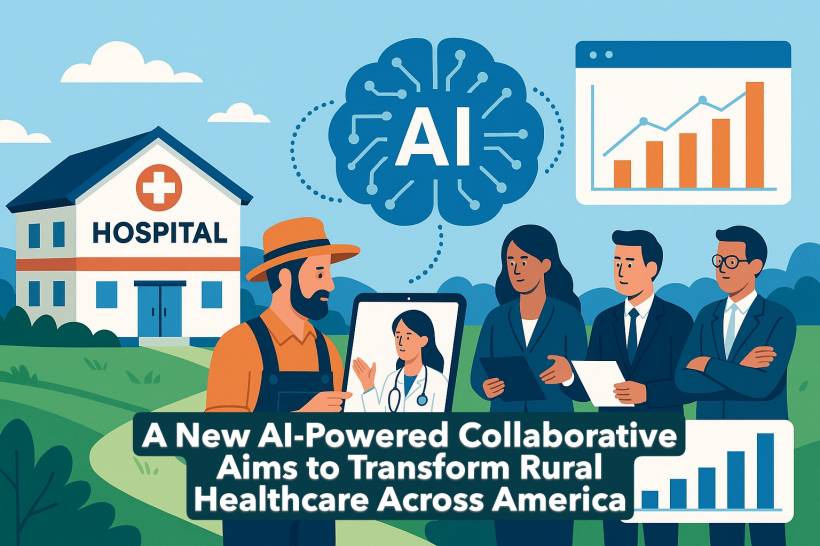A major new initiative is taking shape in the United States, and it's focused squarely on one of the country's biggest healthcare challenges: supporting rural communities that continue to struggle with access, staffing shortages, fragmented systems, and financial strain.
The Collaborative for Healthy Rural America (CHRA) has been launched to help states build modern, AI-enabled healthcare infrastructures—giving them an edge as they apply for funding under the federal $50 billion Rural Health Transformation Program (RHTP).
The collaborative brings together some of the most influential names in health technology and consulting, including Lumeris, Teladoc Health, Deloitte, Nuna, and Unite Us, with the shared goal of improving care access, care quality, and long-term sustainability for rural America.
What CHRA Actually Offers: A Fully Integrated, AI-Driven Primary Care Platform
The CHRA partners plan to roll out a unified platform designed specifically for rural healthcare transformation. This includes:
At the core of this platform is Lumeris' primary-care-as-a-service model, enhanced with a Google Cloud AI agent named Tom. This system becomes the "operational backbone" that ties together patient data, care coordination, and real-time monitoring.
A Wide Scope of Virtual Care
To cover the shortage of rural providers, Teladoc Health brings its nationwide network of clinicians to deliver:
Continuous Support for Chronic Disease
Nuna adds an AI-native mobile coaching app designed to support patients daily, remind them of care plans, and escalate issues to clinical teams when needed.
Making the System Work Together
Deloitte takes on a major role—making sure everything aligns with CMS guidelines, facilitating interoperability, managing data integration, and analysing outcomes.
Measuring Real Impact
With Unite Us, CHRA can benchmark system performance using a "Self Sufficiency Score," which evaluates the effectiveness of medical, behavioural, and community support services.
Why This Matters: Rural Healthcare Is Near Crisis
Rural health challenges in the U.S. have been worsening for nearly two decades. Since 2005:
The RHTP funding, part of the Working Families Tax Cuts Act, aims to stabilise rural healthcare through new care delivery models, technology adoption, and sustainable reimbursement structures. But the problem? States are racing against the clock.
Due to a federal government shutdown and tight application windows, many states worry they won't have enough time to prepare strong proposals—especially proposals involving modern AI-driven technologies. CHRA was created to help solve this problem.
Giving States a Ready-Made Digital Strategy
John Doerr, chairman of Kleiner Perkins, explained that CHRA gives states an "immediate execution path" using proven, AI-backed technologies.
Mike Long, CEO of Lumeris, described the collaborative as a way to use federal funding as the spark for long-term, private-sector–supported solutions.
Google Cloud's healthcare strategy director, Aashima Gupta, echoed the mission: AI and cloud systems should help clinicians deliver better care, particularly in communities that historically receive the least support.
The Bigger Picture: Toward a More Sustainable Future for Rural Care
CHRA is more than a technology bundle—it's a coordinated effort to rebuild rural healthcare with:
If successful, the collaborative could help states modernise their rural health systems faster, reduce provider burnout, and give rural Americans access to high-quality healthcare that feels continuous, coordinated, and personalised.
It represents a significant shift away from fragmented, underfunded systems—and toward a new, sustainable rural healthcare model built on collaboration, data, and AI.




